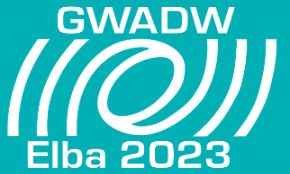Speaker
Description
The proposed LIGO Voyager upgrade would require novel 2-μm interferometric techniques and radiative cooling of 200 kg silicon optics to cryogenic temperatures. Efficient cooldown to 123K is contingent upon strong radiative heat transfer between test masses and cold shielding. The strength of radiative coupling is largely dependent on surface emissivities, which must be high enough to offset heating from a high-power laser and other systematic heat loads. The Mariner upgrade at the Caltech 40m interferometer aims to prototype Voyager technologies. We discuss thermal modeling of 40m silicon core optics, in order to inform optimal coating and shielding design choices for Mariner. We present an emissivity measurement setup to estimate and verify material emissivities within specification tolerances. Samples are cooled in a cryostat to 123K, and robust emissivity estimates are obtained using MCMC multi-parameter estimation. We present a preliminary cryogenic design of an ITM chamber for Mariner Phase I. This work will outline key considerations for radiative cooling of future cryogenic interferometry.

